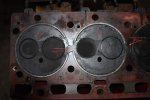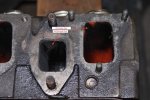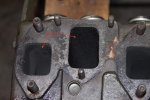Cantrade
Member
- 37
- 0
- 6
- Location
- New Mexico
I am partially through the head removal and #6 intake port is completely sooted up. The other five have clean original colors. I can't tell more right not because I can't lift the head. Shop crane will solve that problem soon.




